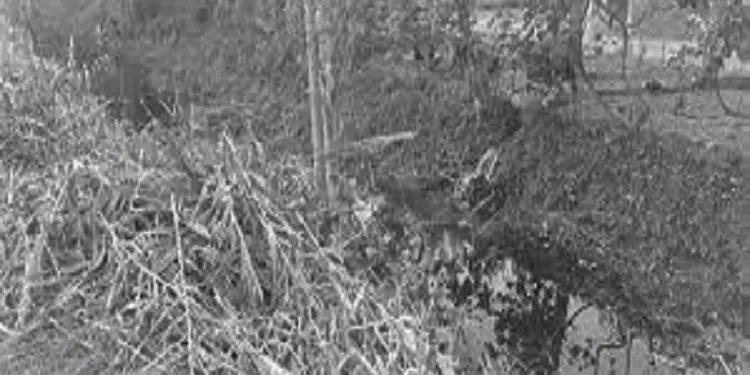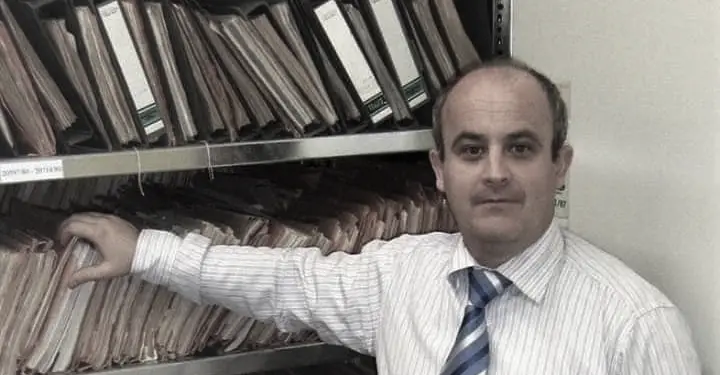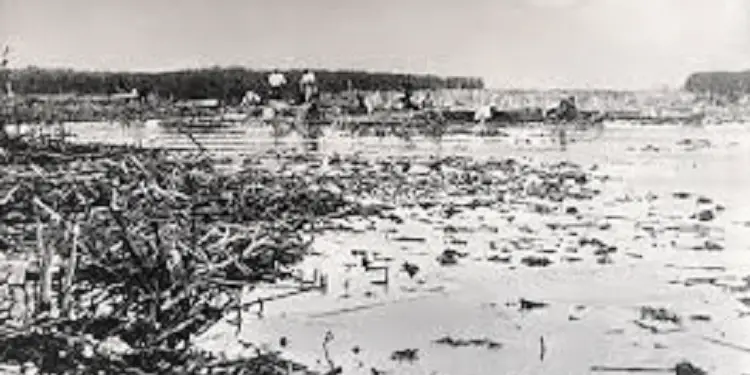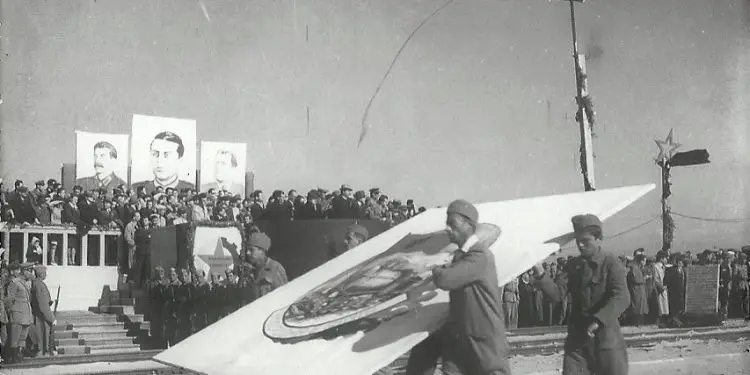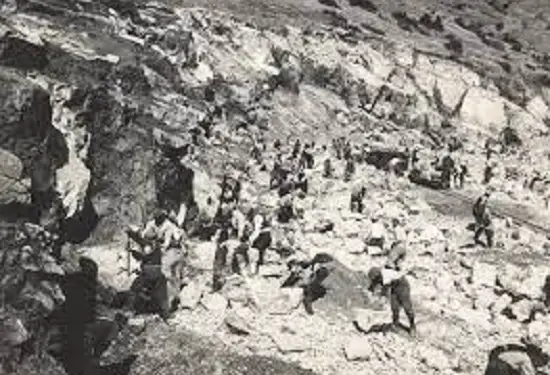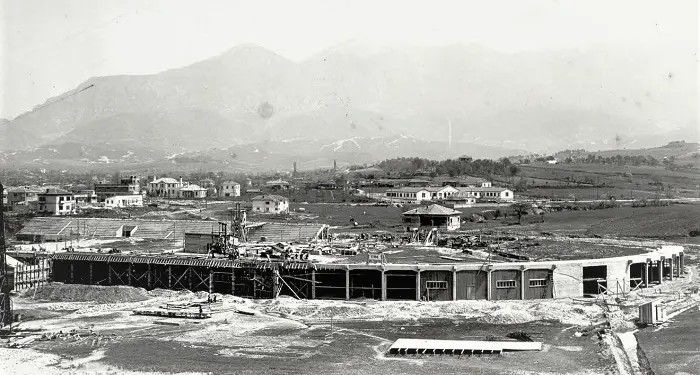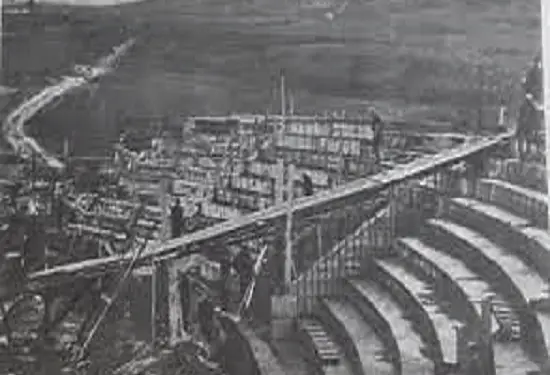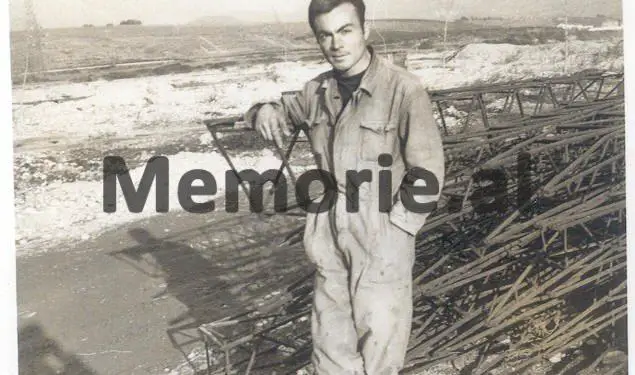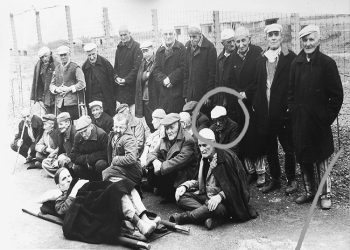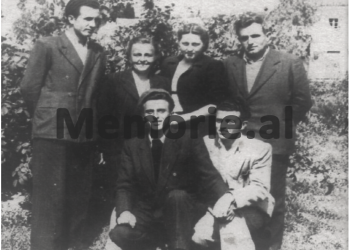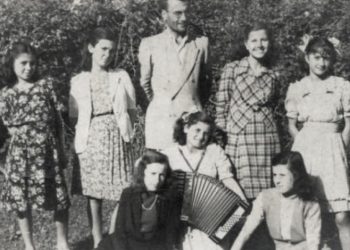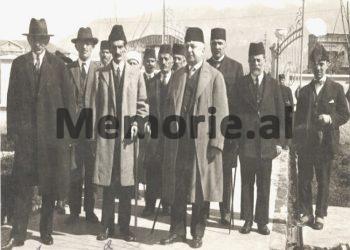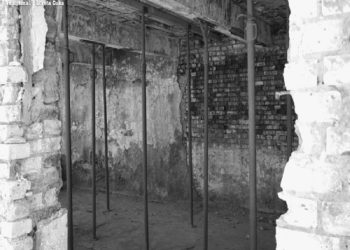By Kastriot Dervishi
Memorie.al / Convicts, interned or imprisoned, have been used in hard labor since the first years of communist rule, but at the beginning of the 50s, their exploitation became the main objective, so all the prisons, with the exception of one prison in Tirana and the prison in Burrel, were labor camps. They moved from one country to another, in a chain that built socialist Albania while destroying its intellectual elite. There were 4-6 thousand prisoners who, under the official designation of “forced laborers”, were used for the construction of the works within the deadline set for the inauguration, and when the ribbon was cut, they had already been sent to another camp, surrounded by another barbed wire and he had been given another almost impossible task.
Works built with the labor of prisoners during the communist regime
- Drainage channels in Juba –
April 1946. The first labor camp was established in Juba, a village east of Durrës. 700-800 prisoners from Tirana and Durrës were gathered there. Political prisoners dug drains near the sea. Among the canal workers 5 km. long and 6 m. wide, there were also former governors: Kostaq Kotta, Ibrahim Biçakçiu, Et’hem Cara.
- The drying up of the Maliq marsh
Ahmet Zogu’s governments had failed in this initiative. The communists set unattainable objectives to dry up the Maliqi Lake within a few months and since they could not achieve it, they shot as saboteurs some of the best technicians in the country and left the American mission in Albania. At this point, the task is passed to the political prisoners. In the spring of 1947, the Orman-Pojani camp was opened, based in Vloçisht, where the government gathered over 2,500 people from “enemies of the people and war criminals”, who with 800 grams of black bread and a spoonful of soup, worked for one of the biggest projects in Albania. Some of the political convicts who worked for the drying of the Maliqi Swamp were: Father Zef Pllumi, Dante’s translator, Pashko Gjeçi, senior official, Nedin Kokona, etc. The works were finished in 1951.
- Peqin-Kavaje irrigation channel
In 1951, Camp no. 1, where there were political and ordinary prisoners who worked for the drying of the Maliqi Swamp, was named Ward 301. After Maliqi, they moved to Gosa i Kavaja, where they opened the irrigation channel near this town.
- Beden Canal
In the camp that would open the channel from the swampy area of Beden, which was also called the swamp of Zhabjaku, to the river Shkumbin to free the field from water, a total of 29 Catholic priests worked among the political convicts.
- Devoll-Thane irrigation canal
In 1948, 1,500 political prisoners were brought to Vlashuk in Berat, to open a canal starting from the Devoll River, which was inaugurated on July 21, 1949. Enver Hoxha’s former schoolmates in France, professors Foto Bala and Isuf Hysenbegasi, were among the convicts who worked for this 8 km canal long.
- Tërbufi channel
In 1956, a department was created in Tërbuf with the aim of drying the Tërbuf marsh in Lushnja. Works continued until 1958.
- Vjosë-Levan-Fier irrigation canal
The camp of prisoners for the construction of this canal was in Shtyllas, from November 3, 1953, until March 18, 1955, when among the prisoners, 715 were political and 172 ordinary.
- Reclamation of the field of Kamza and Valias
Prisoners from Tirana and Durrës were mainly engaged in this work.
- Irrigation channel “Naum Panxhi”
In 1947, the prisoners of Elbasan started the construction of the canal that took water from the river Shkumbin and sent it to the field of Cërrik, but then the work was completed by shareholders and paid workers. During the time they worked on this project, the prisoners marched every morning through the city for 5 kilometers in a column of humiliation, from the prison to the workplace and again in the evening, from the workplace to the cell.
- Works on the Gjadri river
During 1954, prisoners worked in conditions reminiscent of slave labor for the opening of a 1,500 m canal in Hajmel, aimed at avoiding the drowning of the Zadrima field.
- Reclamation of Thumana
Irrigation and drainage canals in Saranda
Areas obtained by opening channels:
Juba 1,700 ha
It covers 6,500 ha
Malik 10,400 ha
Rrushkull and Hamallaj 5,000 ha
Zadrime 6,200 ha
Hoxhare 2,200 ha
Turbuf 18,000 ha
Gramsh-Lozhan road
The road from Gramshi to Lozhan in Korça was opened with wings, by the internees of the Kamza camp, in 1949.
- Peqin-Elbasan railway
For this railway, which began to be built in January 1950, two labor camps were set up with prisoners: the Ura e Bona camp and the Bishqem camp. The railway had 4 tunnels and 100 bridges. In the Ura e Bona camp, about 500 prisoners worked, who completed 70,350 days of work, feeding on a porridge soup in the morning, beans and sometimes a little meat at lunch and tea and marmalade at dinner. While the bread ration continued to be 700-800 grams per person. In the Bishkem camp, about 800 prisoners worked who endured the hardest work and completed over 100,000 working days. The railway was inaugurated by the Minister of Internal Affairs at the time, Mehmet Shehu, on December 21, 1950, in honor of Stalin, to whom the Albanian government owed the methods of exploiting prisoners, although their work was not mentioned in the speeches inaugural.
- Vorë-Laç railway
It was inaugurated on May 1, 1963. 30 km. tall. In the camp that worked for its construction, in 1961, there were 600 convicts.
- Vlora salt pan
In 1970, 340 prisoners worked in this area, digging deep trenches. They built an 8 km embankment that separated the salt marsh from the marsh. They also worked on a land desalination project, but it failed.
- In the field of constructions: the Oil Plant in Cërrik and the Aviation Field, Kuçovo
In 1952, the prisoners were concentrated on the Vajgurore Bridge to start the construction of the Kuçova airfield. Initially, 2,000 prisoners worked, while in 1953, 1,150 prisoners worked, who had completed 204,605 working days. According to an official report from 1952, the life of the convicts is not good due to the fact “that when we came here until today, they have not even once eaten a meat dish, why is this missing”.
- Rinas Airport
The second month after work began, on October 30, 1953, the nature of the work being built appeared to inspire four prisoners to escape, though not through the air, but through an 11-meter-long underground tunnel. The works for the Tirana airport started in September 1953 and the prisoners who came from the Ura Vajgurore camp stayed until the following year, while another group of prisoners, who would form Ward no. 303, worked for the Rinas airport, from 14 -July 15, 1955, until February 8, 1959, when the airport works were completed, so that it was ready for the reception of the general secretary of the Communist Party of the Soviet Union, Nikita Khrushchev, in Tirana.
Prisoner dynamics varied from year to year, but were largely dominated by political prisoners, who in 1957 made up 100 percent of the camp. The official reports pointed out that: engineer Pandeli Zografi, convicted in the process of Maliqi, marked more of the norm for the prisoners, thus accusing him, a second time, of the same “crime”.
- “Qemal Stafa” Stadium
It was completed by the labor of Italian and German prisoners.
- Textile factory in Yzberisht
The prisoners built the ink drainage channel with which the fabrics were to be dyed in this factory during the year 1950. Of course, the work on the ink channel was also done on the ground. On the day of the inauguration, November 8, 1951, no one mentioned the prisoners, who had already left for another labor camp.
- “Agimi” palaces
Among the first buildings that were built from camp no. 4, created for the purpose of convicts being punished by labor. This camp was established in 1953 and in the first months more than half of the prisoners were political convicts, a ratio that was reversed in the following years, however political convicts were never absent from this labor camp, which was established near Lana.
- Dinamo Stadium, today “Selman Stërmasi”
The stadium, designed by the architect Koço Miho, was inaugurated on July 8, 1959. In that year, the convict camp engaged in its construction had 491 prisoners.
- Sanitarium
130 prisoners were made available to the Construction Company from 1959 to 1960 to help build the Sanatorium.
- “Ali Kelmendi” food factory
According to the agreement between the Construction Company and the representative of the Ministry of Internal Affairs, 330 convicts would be engaged in the construction of this plant, which would begin and be completed within 1960.
- “Puna” palaces
Palaces on “Myslym Shyri” street
The main entrance on Durrës street
Black Bird Area
The Bread Factory
Block “50 years of Independence”
Meat Factory
Furry of Tirana
Farm buildings “Gjergj Dimitrov”
Autotractor Plant – a part of the works
Complex “Dinamo”
100 political convicts and 50 ordinary people were engaged from 1987 for the construction and timely completion of the “Dinamo” sports complex.
Caustic Soda Plant in Vlora
Cement factory in Elbasan
Fushë-Kruja Cement Factory
200 flats in the city of Bulqiza
In 1985, a prison ward was opened in Bulqiza, specifically for the construction of residential buildings. In 1987, there were 105 political prisoners in it.
Rubik Copper Processing Plant
The Superphosphate plant in Laç was built in 1963-1967
Apartment in Laç
Oil Refinery Plant in Ballsh
From 1972 to 1979, prisoners worked on the construction of the Deep Oil Refinery. After putting it to work, they were forced to work on building buildings and repairing the bed of the Gjanica River. Memorie.al




